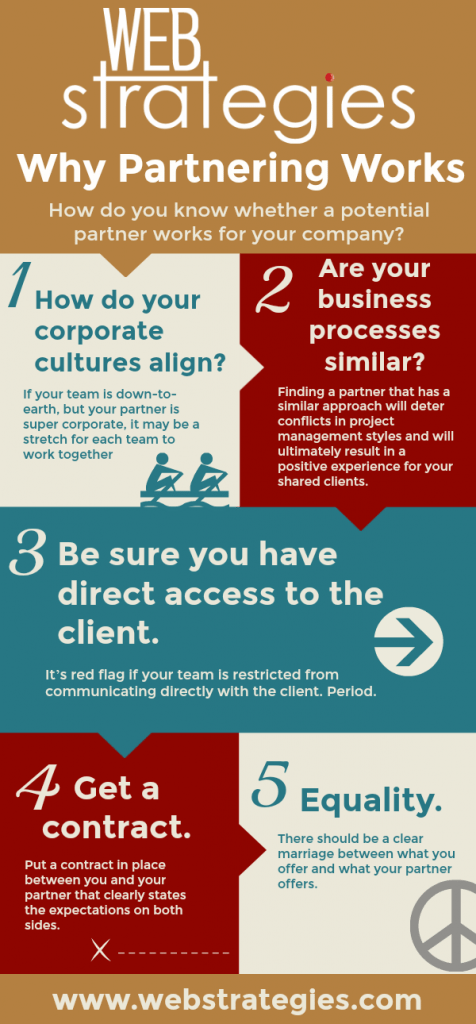Over the years, we’ve had amazing, as well as, less than terrific partnerships with other companies. We’ve learned a lot and still firmly believe that partnering with successful, professional companies is an effective way to increase your sales pipeline and your bottom line.
What do we mean by partnering? Ever company can’t be everything to everyone. There are holes in your service offering whether you realize it or not. Those holes aren’t necessarily a bad thing, it simply means the services you offer are your specialty and can offer the best to your clients. But by identifying and collaborating with other companies that offer what you don’t, you can discover an entirely new line of business that you didn’t have yesterday. Partnering can open doors to new client opportunities as well as extend your overall geographic reach.
How do you know whether a potential partner works for your company? Here are a few rules of thumb:
- How do your corporate cultures align? If your team is down-to-earth, but your partner is super corporate, it may be a stretch for each team to work together. Your partner’s clients may expect three-piece suits at every meeting. Finding a partner whose culture matches your own will only help the process be comfortable and run more smoothly in the long run.
- Are your business processes similar? We have a tried and true methodology that works for almost every project. Finding a partner that has a similar approach will deter conflicts in project management styles and will ultimately result in a positive experience for your shared clients. Most of our partnerships that were less than effective were effected by competing methodologies.
- Be sure you have direct access to the client. If your partner has confidence in your abilities (and vice versa), there should be no concerns with everyone having access to the client. It’s red flag if your team is restricted from communicating directly with the client. Period. If not, messages get misconstrued and the who said, she said begins.
- Get a contract. While all partnerships should be friendly, it’s still a business relationship. Put a contract in place between you and your partner that clearly states the expectations on both sides. What are you offering? What are they offering? How will the revenue share work? What’s the payment schedule? You will save yourself a lot of heartache by ensuring that everyone is on the same page from day one.
- Equality. You need to understand whether you can support your partner’s needs and be up front about your ability to sell their services. There should be a clear marriage between what you offer and what your partner offers. If you don’t feel that their company offers anything your clients need, it might be best to walk away. If you choose to move forward, be sure that everyone understands what you can give back to the relationship.
Partnering can be profitable but, as all relationships, is a give and take proposition. If the opportunity is carefully assessed, has a clear line of communication and feels right, it can open up a revenue stream that can help grow your business beyond your current reach.


